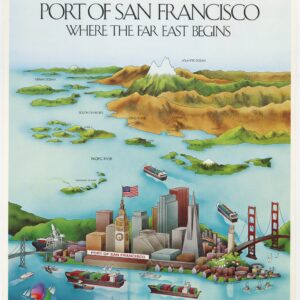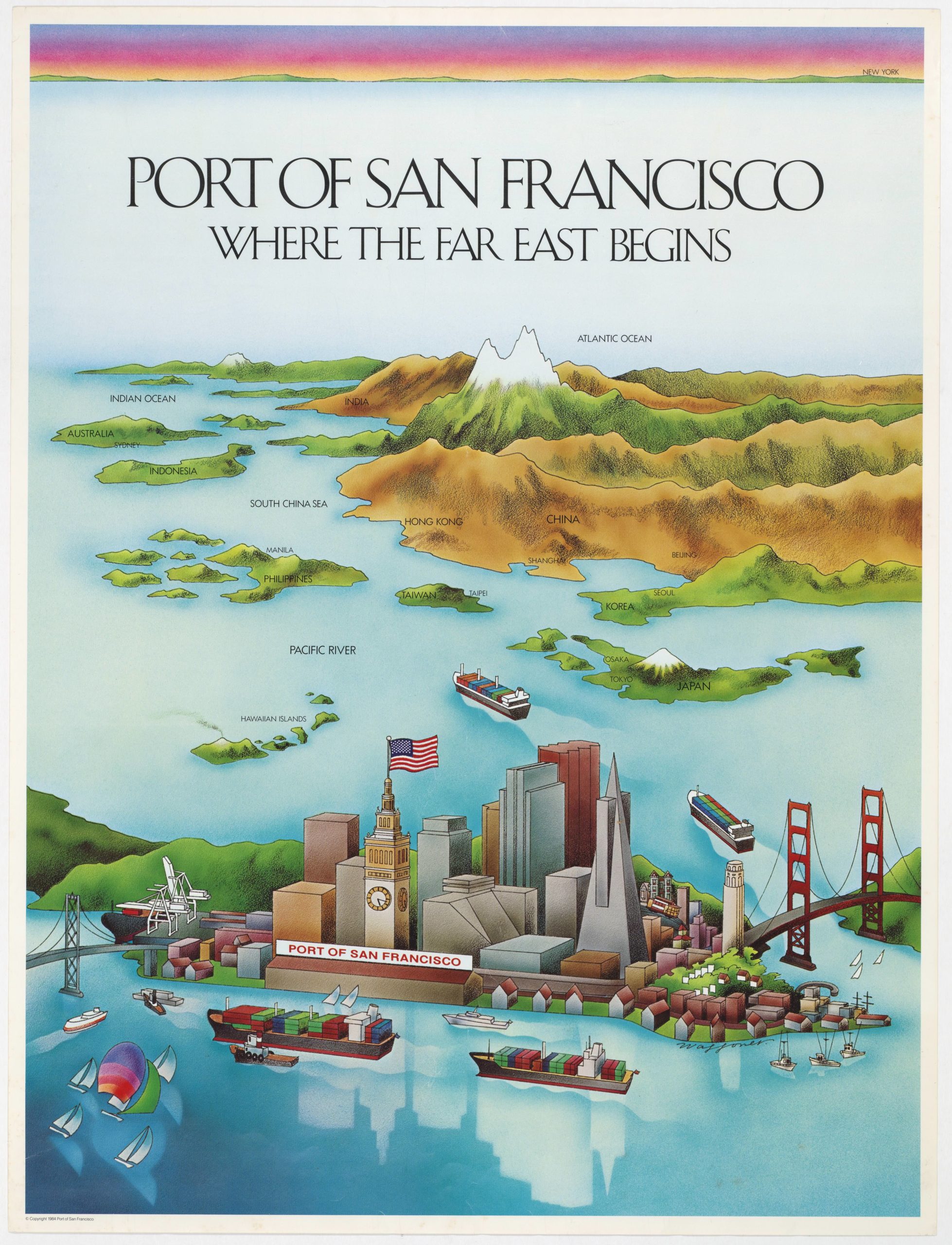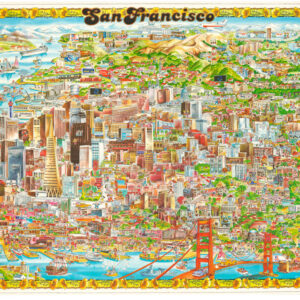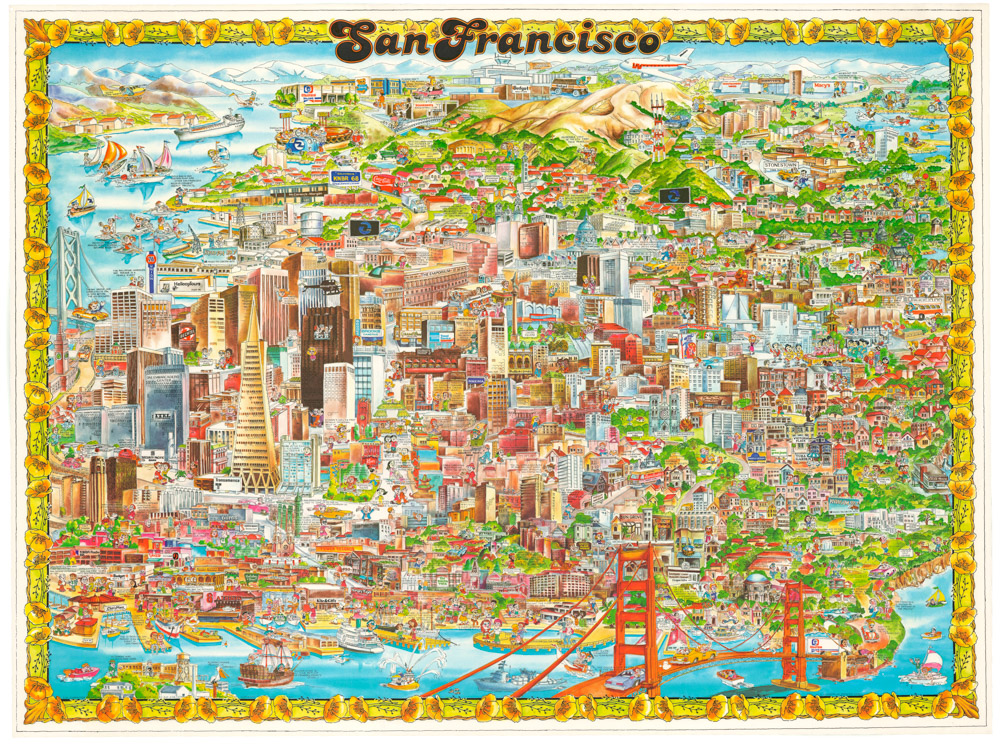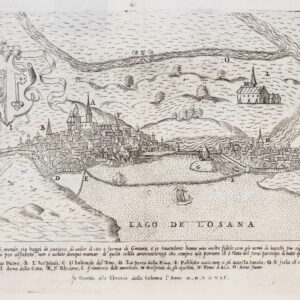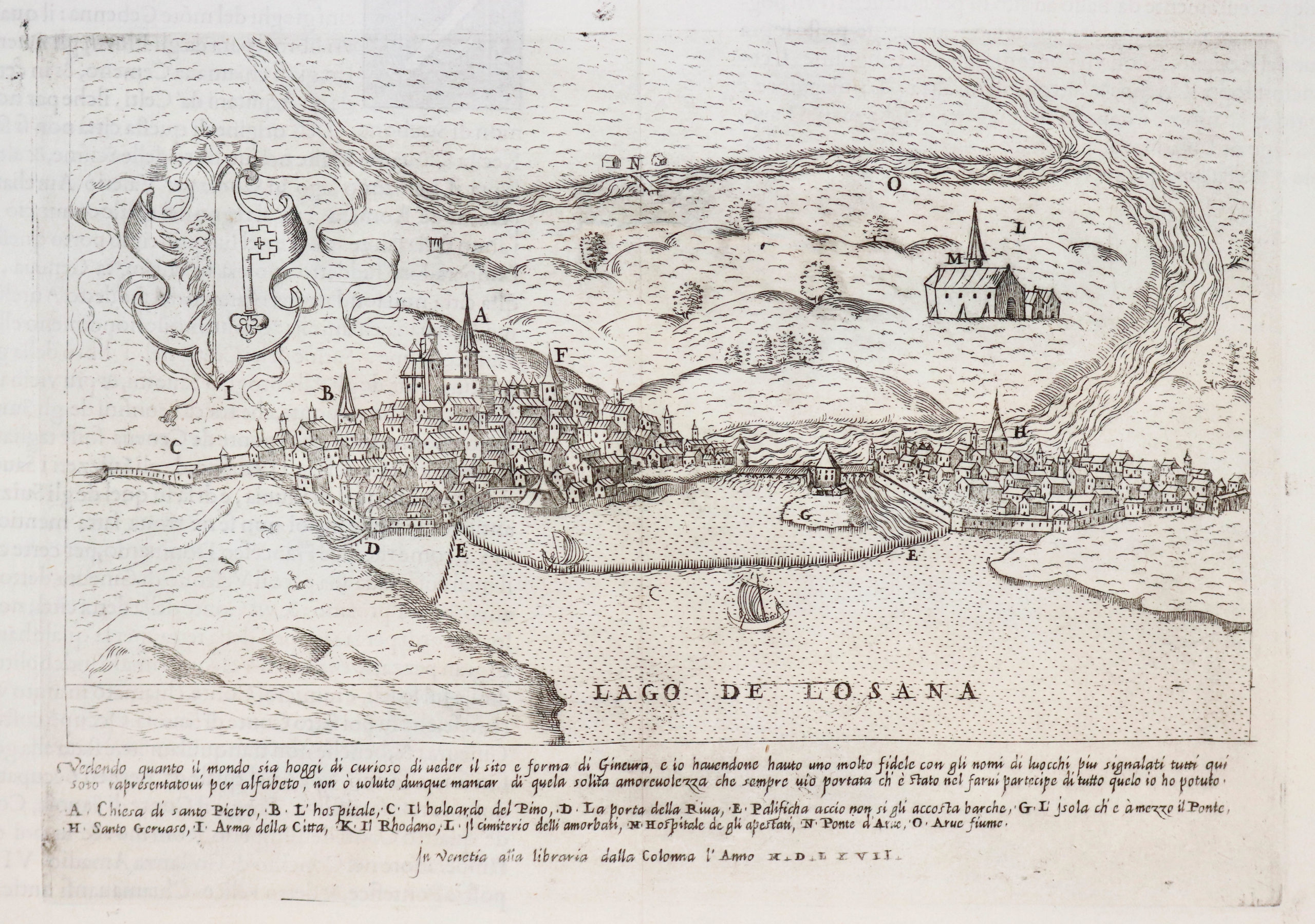A masterfully-composed 1939 color panorama of San Francisco and its newly built bridges.
Site of Golden Gate-International Exposition: “A pageant of the Pacific”
$875
1 in stock
Description
It should come as no surprise that this excellent bird’s-eye-view was originally based on a painting. The sweeping composition features a 3-dimensionality and creative balance born of a painter’s eye, and results in a unique presentation of a well-known theme: the completion of San Francisco’s two famous bridges and the 1939 Golden Gate International Exposition.
The painter was none other than the famous Elbridge Ayer (E. A.) Burbank. Burbank was most famous for his portraits of Native American figures – he was the only artist to paint Geronimo from life – and his depictions of Native American culture. Burbank eventually ended up in San Francisco, where he began a business relationship as an illustrator for Wobbers, Inc., the firm which published this view. Burbank died in 1949 after being struck and severely injured by a cable car.
Our panorama is taken from an aerial point in the middle of San Francisco Bay roughly between Mission Bay and Alameda. It is the age of progress; planes fill the sky and ships hum along the waters of the Bay. The viewer sees parts of San Francisco, Marin County (including Mt. Tamalpais), Richmond, and Albany, Berkeley and Oakland in the East Bay. Treasure Island, the site of the Golden Gate International Exposition, sits in the center of the panorama. This World’s Fair opened from February 18, 1939, through October 29, 1939, and from May 25, 1940, through September 29, 1940. Its theme was “Pageant of the Pacific,” and it showcased the goods of nations bordering the Pacific Ocean. The theme was physically symbolized by “The Tower of the Sun;” by an 80-foot statue of Pacifica, goddess of the Pacific ocean; and by architect Mark Daniels’ Chinese village. The Exposition in part celebrated San Francisco’s two newly built bridges: the San Francisco Oakland Bay Bridge completed in 1936 and the Golden Gate Bridge in 1937.
And yet, despite the centrality of Treasure Island, the attention of the audience is immediately drawn to the city of San Francisco, which occupies the foreground at the left side of the image. The end of the 1930s and beginning of the 1940s was a time of great celebration in San Francisco. The completion of the Golden Gate and Bay Bridges meant that Marin and the East Bay – once rural summer communities – were now just a commute away. As we get a sense from this view, it was a time of great optimism, being before the attack on Pearl Harbor would shock America and bring her into World War II.
Overall then, this well-designed and attractive panorama captures a fascinating and specific point in the history of San Francisco and environs.
Cartographer(s):
Elbridge Ayer (E. A.) Burbank (August 10, 1858 – April 21, 1949) was an American artist who sketched and painted more than 1200 portraits of Native Americans from 125 tribes. He studied art in Chicago and in his 30s traveled to Munich, Germany for additional studies with notable German artists. He is believed to be the only person to paint the war chief Geronimo from life.
Wobbers, Inc.Wobbers, Inc. (also Wobber Bros.) was a San Francisco-based publishing firm especially active in the interwar period.
Condition Description
Very good.
References
OCLC/WorldCat lists only one copy, at the California Historical Society.
